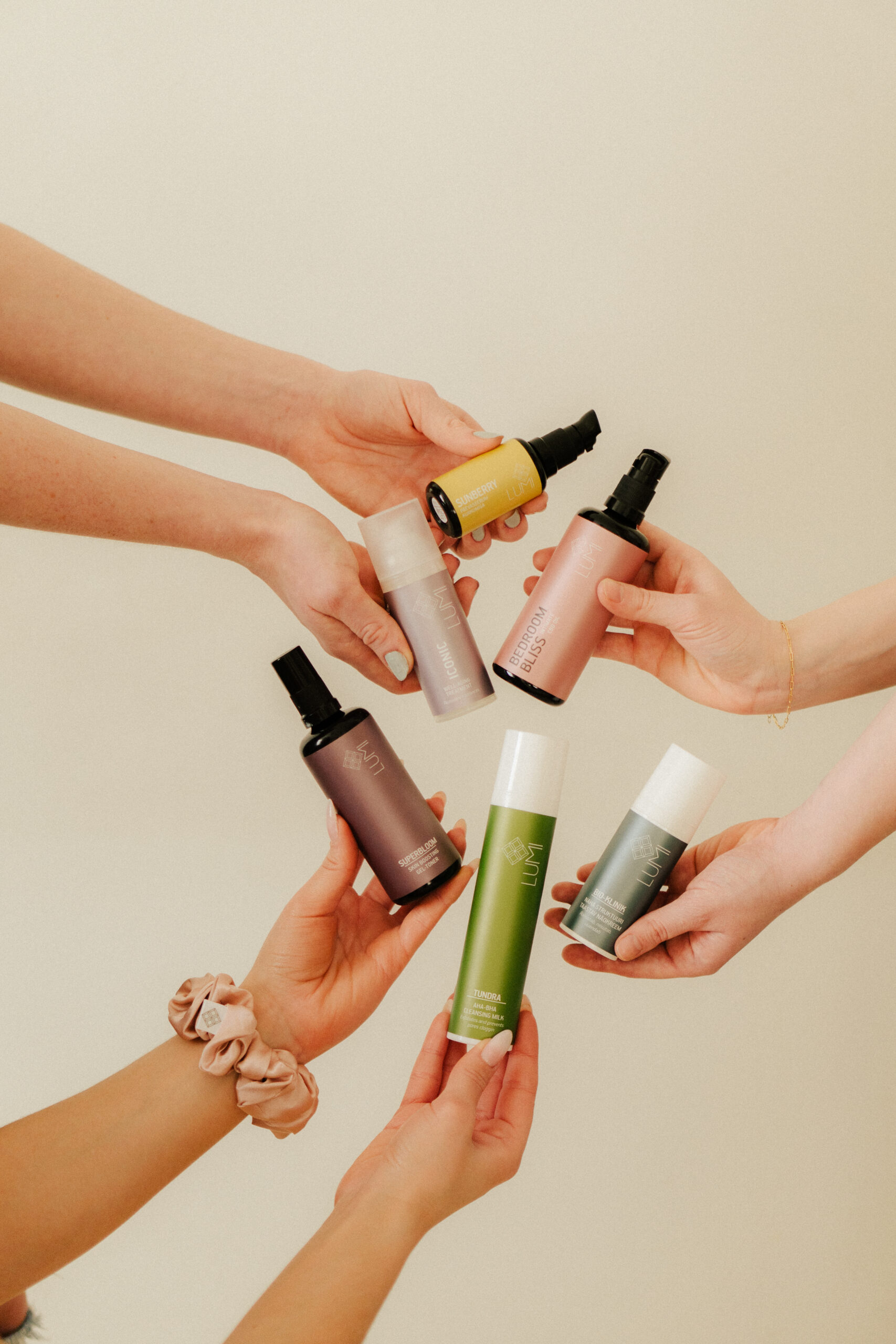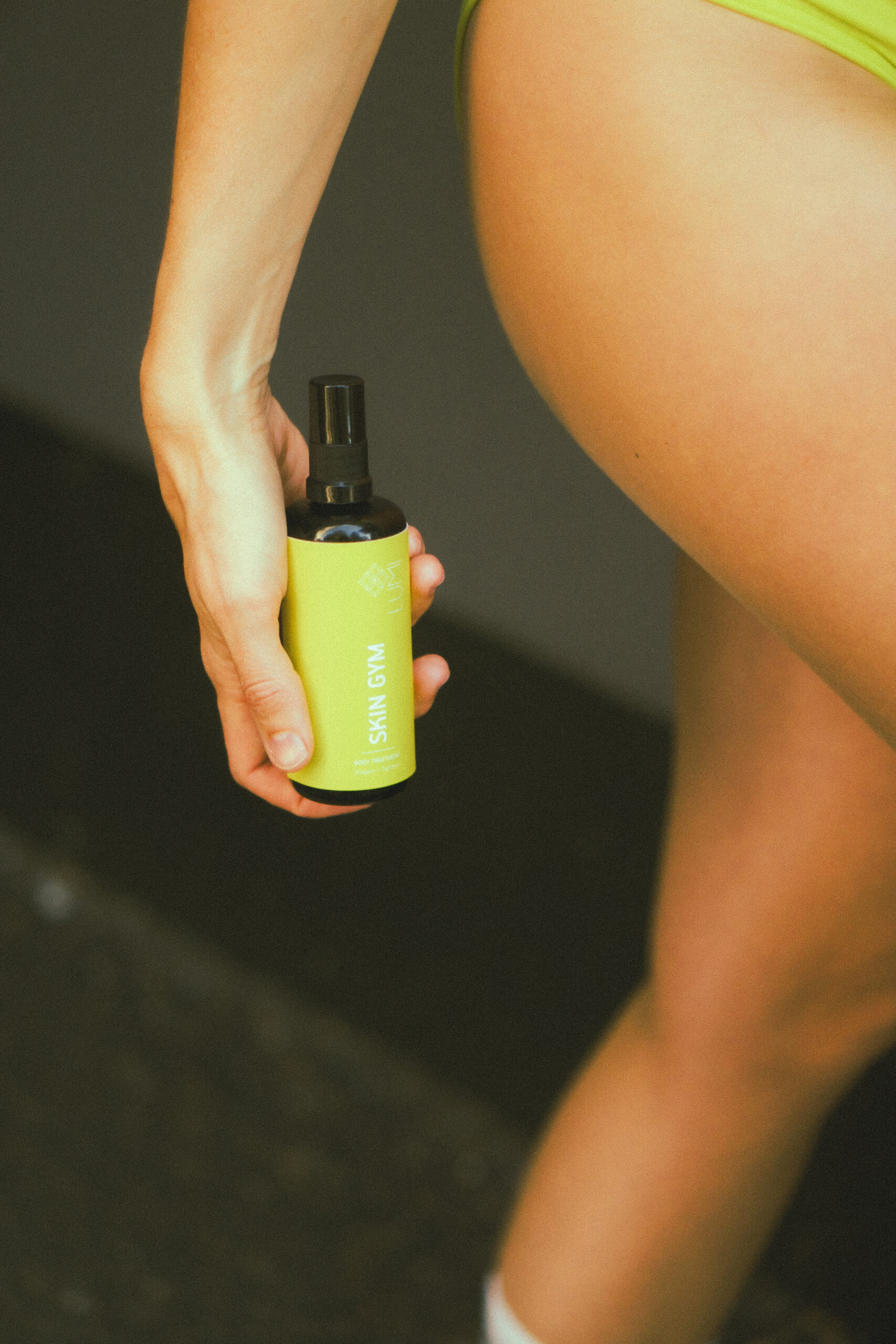Breaking Point: The Impact of Stress on Skin, and How LUMI and PĒLL Can Help!
The modern world is a stressful place. The news can be overwhelming, and the frenetic pace of living in an era of endless connectivity can take its toll on us, both mentally and physically. We can sometimes even contribute to our own stress by not giving the body what it needs.
If all that wasn’t enough, there are also things we may not immediately identify as ‘stressors’, but that exert the same kind of pressure on our bodies – factors such as pollution and even UV exposure. It can be tough out there!
Our skin is unfortunately not immune to the effects of all these stressors. If anything, it can display the impact of stress more quickly and severely than the rest of our bodies. That’s why it’s vital that we give our skin the helping hand it needs to prevent and recover from stress damage.
But how, you ask? Well, with LUMI and PĒLL, of course!
Today, we’re going to explore how different stressors affect your skin, and how a combination of all-natural skincareand potent phytocannabinoids from your two favourite Estonian innovators can help your skin fight back and feel great.
Let’s jump in!
You Do It To Yourself – Internal Stressors
When most of us think of stress, our minds will jump to mental or emotional pressure. Factors such as anxiety, prolonged low mood, or external triggers such as work or family commitments can all put our mind and body under a significant load of stress.
Our bodies can deal with mild amounts of stress over short periods, but prolonged periods of stress have been shown to contribute to and sometimes trigger skin diseases such as atopic dermatitis and acne, as well as speeding up the skin aging process.
This happens because stress triggers a ‘fight or flight’ response in our cells through cortisol production that leads to delayed wound healing (causing skin to regenerate imperfectly), reduced collagen production (vital for skin structure and elasticity) and oxidative stress.
It’s not just mental or emotional pressure that can force our skin into this fight or flight response, though! Putting our bodies through physical hardship, or depriving it of its needs, can also contribute greatly to premature aging. Factors such as extreme temperatures, lack of sleep, malnutrition, and infection can all take their toll on our skin on a cellular level, affecting the body in the same way as any other stressor.
Looking after your skin means looking after your whole body and its needs – it’s always a holistic endeavour!
You vs. The Universe – Environmental Stressors
As we mentioned earlier, stressors are not limited to merely internal factors. There are a host of environmental stressors that can impact your skin, whether by hastening the aging process or contributing to skin diseases. These environmental stressors can be far reaching. Tobacco smoke, radiation, pollution, and even some cosmetic products can all affect skin cells, triggering responses similar to that of internal stressors.
UV radiation contributes perhaps the largest, and certainly most consistent, stress upon our skin. Whilst many people think that the sun only causes damage if allowed to burn skin, the science is clear – photoaging (UV-caused skin aging) is a process that occurs whenever we are in direct sunlight. Photoaging is caused by UVA and UVB rays acting as stressors to skin cells and DNA, and can be responsible for wrinkles, hyperpigmentation, and skin thickening (sometimes giving skin an almost leathery texture).
Repairing the Skin Damage Caused by Stress
Don’t worry! There’s no need to stress about stressors (if you’ll pardon the pun) because help is at hand. The most important, and perhaps most obvious, piece of advice we can give is to try and reduce the amount of stressors in your life, whether they be mental, physiological, or environmental. “An ounce of prevention is worth a pound of cure” is a well-known cliché for a reason!
Of course, it’s not always that simple. Sometimes, we simply cannot avoid stress and the impact it has on our skin. That’s where LUMI and PĒLL come in. Two of Estonia’s most innovative all-natural brands, the pair bring a wealth of skincare and cannabinoid solutions to help your body weather the storm of adult life.
LUMI have over a decade’s experience in mending and protecting skin from stressors both inside and out. Their creams are packed with ingredients such as fermented oat extract to restore and strengthen the skin barrier, whilst natural antioxidants from red algae and blackcurrant extract eliminate pesky free radicals, reducing oxidative stress.
Another favourite is bakuchiol (a plant-derived ingredient that has the efficacy of retinoids without much of their painful drawbacks), which has been shown to be clinically effective in rejuvenating skin by increasing collagenproduction. A breakdown of existing collagen and restriction of collagen production are common effects of photoaging. To round things off, included prebiotics and probiotics in many products help foster a healthy skin microbiome – vital in maintaining skin’s protective function and proper wound healing capabilities.
Cannabinoids represent an exciting new possibility when it comes to protecting and mending skin, and PĒLL are right at the forefront of things. There is an ever-growing body of research that suggests that the endocannabinoid system (ECS) – an internal network of signallers, signals, and receptors in the human body – plays a pivotal role in keeping our bodies healthy, including our skin.
Cannabidiol (CBD) has been shown to be effective in bringing skin back towards homeostasis (optimal biological functioning) via the ECS in cases of skin disease such as acne and dermatitis, as well as restoring the skin barrier and helping with pigmentation issues.
Similar results have also been found for cannabigerol (CBG), another prevalent cannabinoid. In addition to helping reduce skin aging and repair the skin’s protective barrier, both CBD and CBG are also effective methods of managing stress and anxiety, helping to reduce the amount of stressors that reach your skin in the first place!
Both CBD and CBG oils are available from PĒLL, in a variety of strengths to suit your individual needs. The most brilliant aspect of PĒLL’s oils is that, because of their food grade quality and high efficacy, they can be consumed internally or applied externally on skin. Try mixing a few drops of PĒLL oil into your LUMI creams to complement your cannabinoid regime and watch how quickly great results follow!
The First Steps to Better Skin
Ready to start fighting back against stress? Help your body de-stress and rejuvenate your skin with the power combo of LUMI and PĒLL. We recommend the 40 & ICONIC Set, which is packed full of natural ingredients to help you restore your skin barrier, produce more collagen, and protect your body from free radicals.
For PĒLL oils, we recommend applying a few drops of medium strength 30% full-spectrum CBD extract under the tongue each day (proper dosage may vary from person-to-person), as well as mixing some more of the oil into your LUMI skin products.
Cast off the shackles of stress, and embrace a happier, healthier you with LUMI and PĒLL!
References:
-
Baswan, S. M., Klosner, A. E., Glynn, K., Rajgopal, A., Malik, K., Yim, S., & Stern, N. (2020). Therapeutic Potential of Cannabidiol (CBD) for Skin Health and Disorders. Clinical, cosmetic and investigational dermatology, 13, 927–942. https://doi.org/10.2147/CCID.S286411
-
Battista, N., Di Tommaso, M., Bari, M., & Maccarrone, M. (2012). The endocannabinoid system: an overview. Frontiers in behavioral neuroscience, 6, 9. https://doi.org/10.3389/fnbeh.2012.00009
-
Chen, Y., & Lyga, J. (2014). Brain-skin connection: stress, inflammation and skin aging. Inflammation & allergy drug targets, 13(3), 177–190. https://doi.org/10.2174/1871528113666140522104422
-
Debacq-Chainiaux, F., Leduc, C., Verbeke, A., & Toussaint, O. (2012). UV, stress and aging. Dermato-endocrinology, 4(3), 236–240. https://doi.org/10.4161/derm.23652
-
De Tollenaere, M., Meunier, M., Scandolera, A., Sandre, J., Lambert, C., Chapuis, E., Auriol, D., & Reynaud, R. (2020). Well-aging: A new strategy for skin homeostasis under multi-stressed conditions. Journal of cosmetic dermatology, 19(2), 444–455. https://doi.org/10.1111/jocd.13047
-
Dhaliwal, S., Rybak, I., Ellis, S. R., Notay, M., Trivedi, M., Burney, W., Vaughn, A. R., Nguyen, M., Reiter, P., Bosanac, S., Yan, H., Foolad, N., & Sivamani, R. K. (2019). Prospective, randomized, double-blind assessment of topical bakuchiol and retinol for facial photoageing. The British journal of dermatology, 180(2), 289–296. https://doi.org/10.1111/bjd.16918
-
Graubard, R., Perez-Sanchez, A., & Katta, R. (2021). Stress and Skin: An Overview of Mind Body Therapies as a Treatment Strategy in Dermatology. Dermatology practical & conceptual, 11(4), e2021091. https://doi.org/10.5826/dpc.1104a91
-
Kahan, V., Andersen, M. L., Tomimori, J., & Tufik, S. (2010). Can poor sleep affect skin integrity?. Medical hypotheses, 75(6), 535–537. https://doi.org/10.1016/j.mehy.2010.07.018
-
Pandel, R., Poljšak, B., Godic, A., & Dahmane, R. (2013). Skin photoaging and the role of antioxidants in its prevention. ISRN dermatology, 2013, 930164. https://doi.org/10.1155/2013/930164
-
Parrado, C., Mercado-Saenz, S., Perez-Davo, A., Gilaberte, Y., Gonzalez, S., & Juarranz, A. (2019). Environmental Stressors on Skin Aging. Mechanistic Insights. Frontiers in pharmacology, 10, 759. https://doi.org/10.3389/fphar.2019.00759
-
Perez, E., Fernandez, J. R., Fitzgerald, C., Rouzard, K., Tamura, M., & Savile, C. (2022). In Vitro and Clinical Evaluation of Cannabigerol (CBG) Produced via Yeast Biosynthesis: A Cannabinoid with a Broad Range of Anti-Inflammatory and Skin Health-Boosting Properties. Molecules (Basel, Switzerland), 27(2), 491. https://doi.org/10.3390/molecules27020491
-
Poljšak, B., & Milisav, I. (2012). Clinical implications of cellular stress responses. Bosnian journal of basic medical sciences, 12(2), 122–126. https://doi.org/10.17305/bjbms.2012.2510
-
Tóth, K. F., Ádám, D., Bíró, T., & Oláh, A. (2019). Cannabinoid Signaling in the Skin: Therapeutic Potential of the “C(ut)annabinoid” System. Molecules (Basel, Switzerland), 24(5), 918. https://doi.org/10.3390/molecules24050918

